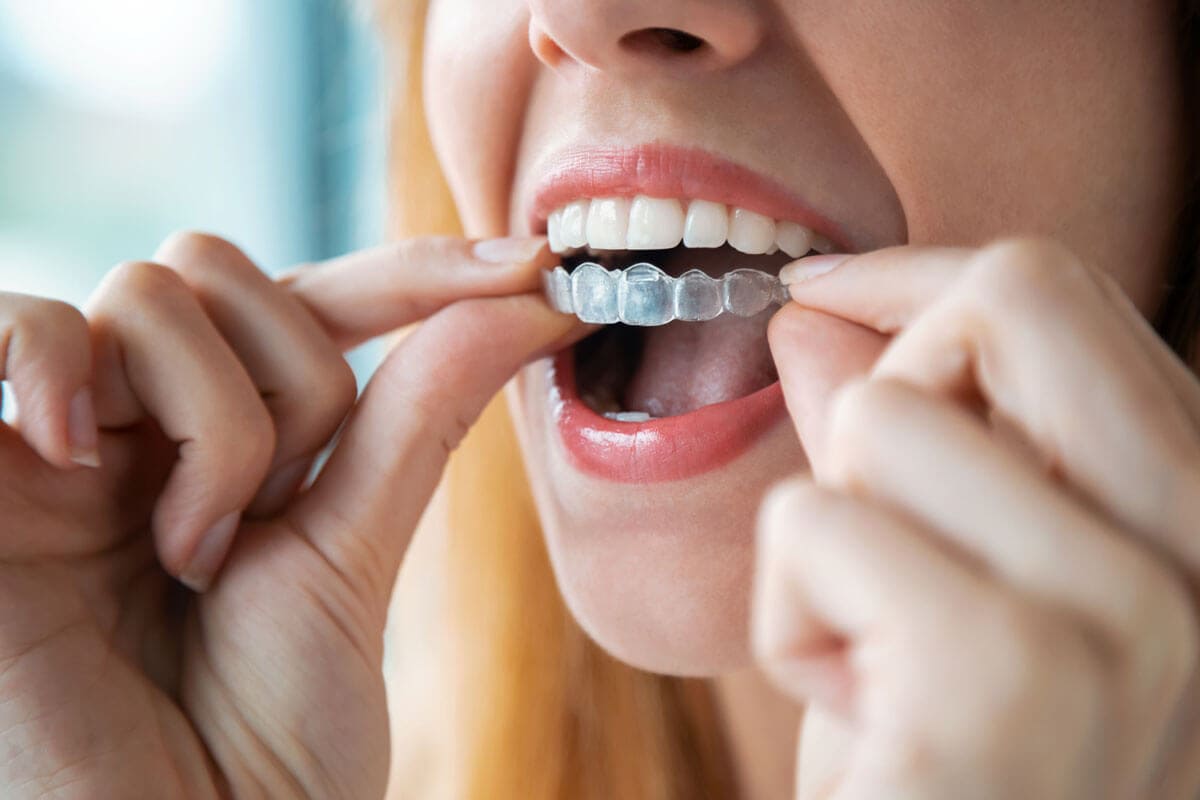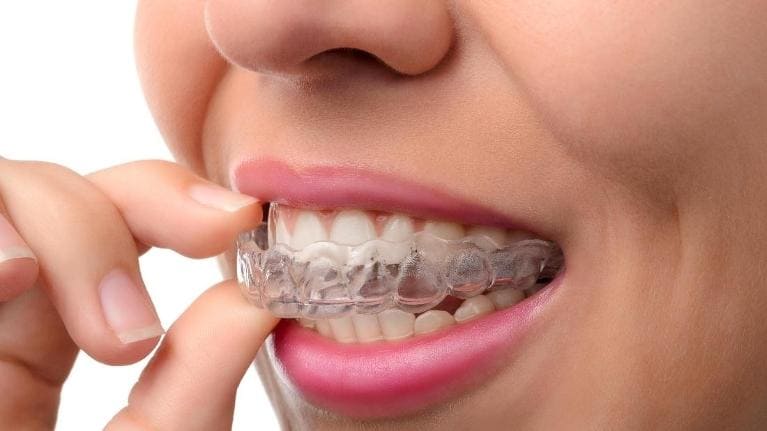Teeth Retainer
A teeth retainer is an orthodontic device worn after the braces are removed. Each patient’s mouth and teeth are covered by this piece, which is comprised of metal and plastic. Every patient who has received braces needs to wear a retainer.
A dental appliance called a retainer is used to preserve a patient’s dental alignment following braces treatment or to address minor teeth problems. It is manufactured specifically for each person and is shaped to fit snugly over the teeth, retaining them in place and keeping them from shifting back to their initial positions. Retainers are often constructed of plastic or a plastic and metal combination and can be either detachable or fixed in situ. In order to ensure that the results achieved with braces appliances are sustained over time, retainers are a crucial component of treatment.
Why Do You Need a Teeth Retainer?
There are several situations where teeth retainers are required, including:
To maintain the results of braces treatment
Teeth often shift back to their native locations after wearing braces or other appliances. The teeth are kept in their new places by retainers, which stop them from shifting.
To correct minor braces issues
Teeth can occasionally be slightly crooked or out of place, but not to the point where braces are required. The teeth can be softly moved into a more aesthetically pleasing position using retainers.
To prevent teeth grinding and clenching
Additionally, retainers can be used to shield teeth from the harm caused by teeth grinding and clenching, which can wear down teeth and result in jaw pain.
To treat temporomandibular joint (TMJ) disorders
Retainers can be utilized as a component of a whole treatment strategy to address TMJ issues, which can lead to jaw joint pain and discomfort.
Overall, using teeth retainers is a crucial part of preserving good dental health and making sure that the effects of treatment last over time.
Types of Teeth Retainers:
There are various kinds of retainers for teeth, including:
- Hawley Retainers: The front teeth are held in place by a wire that wraps around these detachable retainers, which are constructed of plastic or acrylic.
- Clear Aligner Retainers: These detachable, transparent retainers have the appearance of clear aligners. They are created specifically for each person and have a snug fit over the teeth.
- Fixed Retainers: These are sometimes referred to as bonded or lingual retainers, and a wire is used to hold them in place so they are permanently affixed to the back of the teeth.
- Combination Retainers: These retainers incorporate features of both fixed and removable retainers. For instance, a combined retainer might include a fixed wire on the lower teeth and a plastic piece that can be taken out on the top teeth.
The orthodontic requirements, lifestyle, and preferences of the individual will determine the type of retainer that is advised. Your dentist can advise you on the appropriate type of retainer for your needs.
How to Clean Your Teeth Retainer
Maintaining good oral hygiene and preventing the accumulation of bacteria and plaque need regular cleaning of your retainer. Here are some cleaning instructions for your retainer:
- Wash your retainer with warm water before and after each use.
- Brush your retainer with a soft-bristled toothbrush and mild soap or denture cleaner. Be sure to brush gently to avoid damaging the retainer.
- Soak your retainer in a solution of equal parts water and vinegar or hydrogen peroxide once a week to help remove any buildup or bacteria.
- Avoid using hot water or harsh chemicals, such as bleach, on your retainer, as this can damage the material.
- When not in use, store your retainer in a clean, dry container.
- Do not eat or drink with your retainer in place, as this can cause staining and increase the risk of bacteria buildup.
- Visit your orthodontist or dentist regularly to have your retainer checked and cleaned professionally.
You can help keep your teeth retainer clean and effective in maintaining the alignment of your teeth by paying attention to the advice in this article.
Is it possible to have permanent retainer?
The majority of patients are eligible for permanent retainers on their bottom teeth. In the event that your bone health is compromised, a permanent retainer can be a preferable solution. On the other hand, a permanent retainer might not be a good solution if your bite is positioned so that you run the risk of biting into it or if the retainer causes you to alter the way you bite. Because of this, many patients decide against getting an upper retainer that is permanent. Ask your orthodontist about this if you have any questions.
If my fixed retainer breaks, what should I do?
Make an appointment with your orthodontist right away if your retainer breaks. The retainer needs to be replaced for it to work correctly. Your teeth will move once again while you wait for the retainer to be fixed or replaced. A misplaced set of teeth can only be fixed by starting active treatment again. Call the closest clinic and schedule an appointment as soon as you can if seeing your dentist is not a possibility.

You can keep your teeth looking great and make the most of your investment by maintaining your retainer.
Retainers
HOLLYWOOD SMILE DENTAL CLINIC
DUBAI – UAE

An orthodontic appliance worn after braces is a retainer.
Tips for Maintaining Good Oral Health with a Teeth Retainer
Using a teeth retainer to maintain good oral health is essential to avoid dental issues like tooth decay and gum disease. Here are some pointers for keeping your mouth healthy while wearing a retainer:
Brush your teeth twice a day: Use a fluoride toothpaste to brush your teeth twice a day for at least two minutes each time. Make sure to brush your teeth thoroughly, paying particular attention to the retainer area.
Floss daily: To get rid of plaque and food fragments from in between your teeth and around your retainer, floss at least once a day.
Rinse with mouthwash: Use an antiseptic mouthwash to rinse your mouth thoroughly to eliminate bacteria and freshen your breath.
Remove your retainer before eating: To avoid food particles becoming stuck in your retainer, take it out before you eat.
Avoid sugary and acidic foods and drinks: Limit your consumption of sugary and acidic foods and beverages because they can harm your retainer and cause tooth decay, including as candy, soda, and fruit juice.
Wear your retainer as directed: To keep your teeth in their proper positions, wear your retainer as instructed by your dentist or orthodontist.
Visit your orthodontist or dentist regularly: To maintain good dental health, schedule routine checkups and cleanings with your dentist or orthodontist.
You can guarantee that your teeth and retainer remain strong and healthy by paying attention to the advice in this article.
Make your dream smile a reality!
We are dedicated to giving each of our patients the healthy smile they deserve!
Schedule an appointment for a free consultation with one of our Dentists at Hollywood Smile Dental Clinic Dubai.

